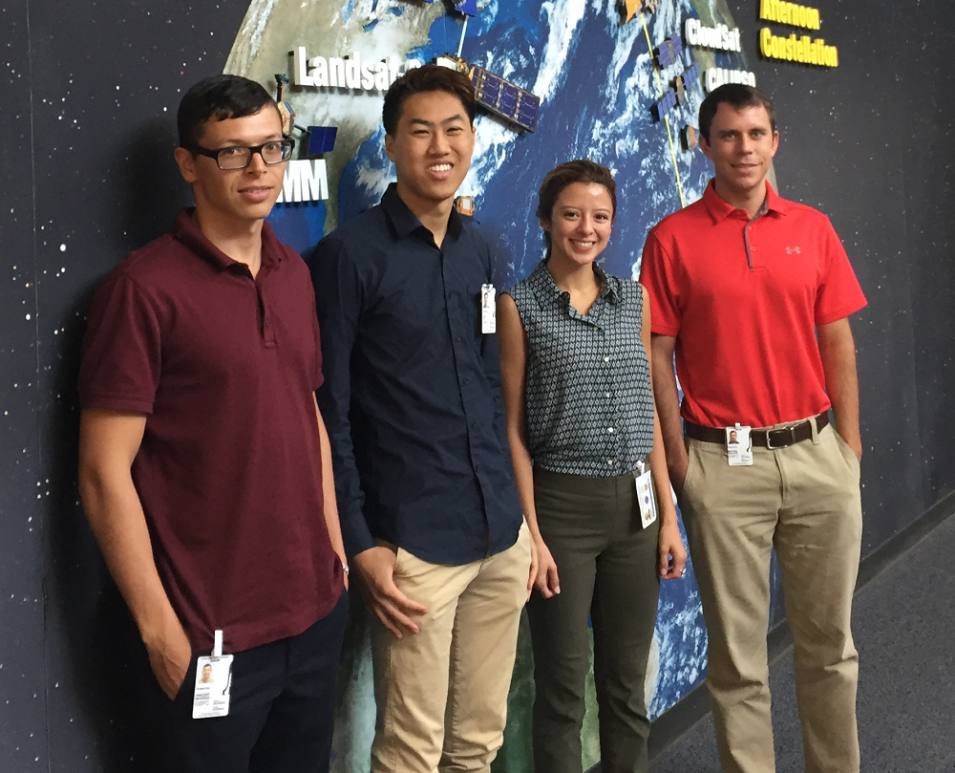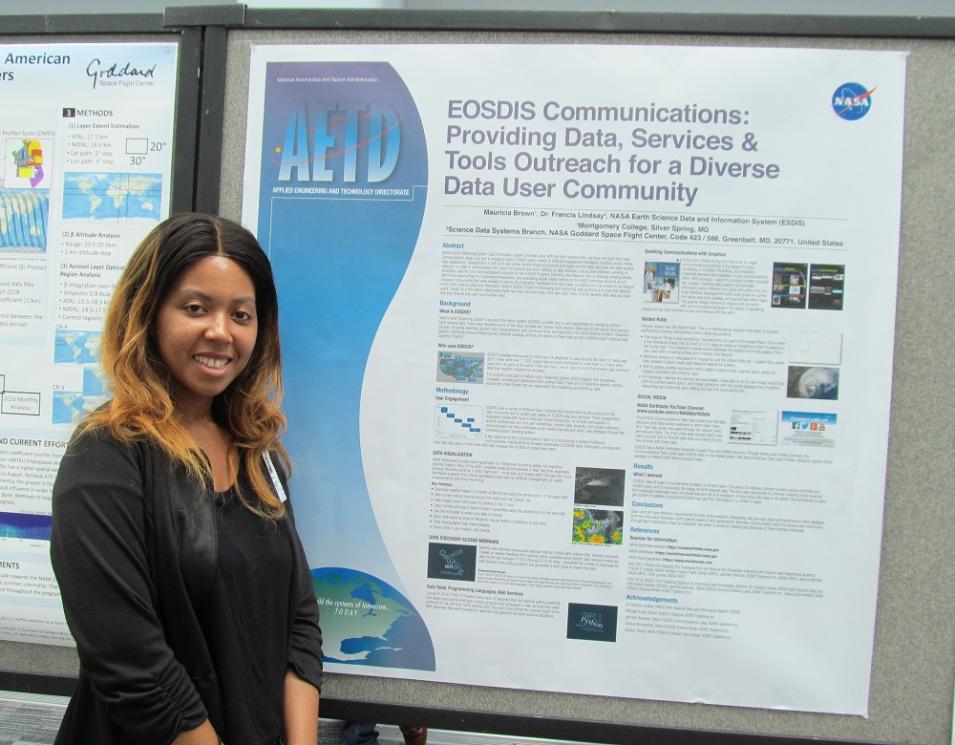| DAAC or Office |
Intern |
School Attending |
Academic Year |
Project |
| ASDC |
David (Preston) Callaway |
Virginia Tech, Blacksburg, VA |
Rising Sophomore |
Assisting the Enterprise Systems team and the Asset Manager with various items in the data center. |
| ASDC |
Kathy LaMarsh |
D'Youville College, Buffalo, NY |
Entering third year of dietetics program |
Researching abandoned airborne missions and creating a record of recommendations for which EOSDIS DAAC should archive these mission data. |
| ASF DAAC |
Krystal Austin |
University of Alaska Fairbanks |
Senior |
Synthetic Aperture Radar (SAR) data recipe development. |
| ASF DAAC |
Louis Bastille |
University of Alaska Fairbanks |
Sophomore |
Community and secondary education outreach using the ASF Ground Station-Alaska Summer Research Academy (ASRA) Project. |
| ASF DAAC |
Rowan Biessel |
University of Alaska Fairbanks |
Sophomore |
SAR data recipe development. |
| ASF DAAC |
Hal Dimarchi |
University of Alaska Fairbanks |
Senior |
Feature enhancements for the ASF on-demand processing system. |
| ASF DAAC |
Jake Herrmann |
University of Alaska Fairbanks |
Junior |
Adding Sentinel-1 radiometrically terrain corrected (RTC) products to EOSDIS Global Imagery Browse Services (GIBS). |
| ASF DAAC |
William Horn |
University of Alaska Fairbanks |
Senior |
Feature enhancements for the ASF on-demand processing system. |
| ASF DAAC |
Nathan Sanches |
University of Alaska Fairbanks |
Freshman |
SAR collections metadata updates, data recipe testing, and corner reflector maintenance. |
| ASF DAAC |
Rohan Weeden |
University of Alaska Fairbanks |
Senior |
Feature enhancements for the ASF on-demand processing system. |
| ESDIS |
Mauricia Brown |
Montgomery College, Silver Spring, MD |
Rising Sophomore |
EOSDIS communications projects support. |
| ESDIS |
Vincent Inverso |
University of Pennsylvania, Philadelphia, PA |
MS candidate |
Dataset recommendations for Earthdata Search. |
| ESDIS |
Paul Lin |
University of Pennsylvania, Philadelphia, PA |
Sophomore |
Earth science analysis using cloud computing. |
| ESDIS |
Jack Miller |
Iowa State University, Ames, IA |
MS candidate/entering PhD candidate |
Building an augmented reality prototype for Worldview. |
| ESDIS |
Diane Portillo |
DePaul University, Chicago, IL |
Recent BS graduate |
Earth science analysis using cloud computing. |
| ESDIS |
Michael Walker |
University of Maryland, College Park, MD |
Senior |
Dataset recommendations for Earthdata Search. |
| GES DISC |
Jack Corcoran |
Cornell University, Ithaca, NY |
Rising Senior |
Using machine learning to retrieve precipitation information from social media and web text mining for science applications. |
| GES DISC |
Sky Wang |
University of Michigan, Ann Arbor, MI |
Rising Sophomore |
Using machine learning to retrieve precipitation information from social media and web text mining for science applications. |
| ORNL DAAC |
Kavan Arasu |
Portland State University, Portland, OR |
MS candidate |
Generating reports and alerts in Kibana from Elasticsearch, Logstash, and Kibana (ELK) stack logging of usage metrics for ORNL DAAC products and services, including incorporation of an interactive user history page to be displayed when users sign into the ORNL website. |
| ORNL DAAC |
Joanna Held |
University of Iowa, Iowa City, IA |
Rising Junior |
Estimating ORNL dataset publication efficiencies by statistically analyzing the time taken from submission to publication of datasets across different stages of the publication workflow for multiple years and projects. |



